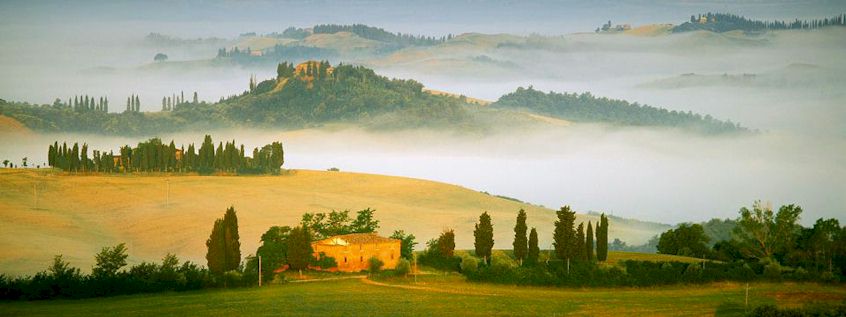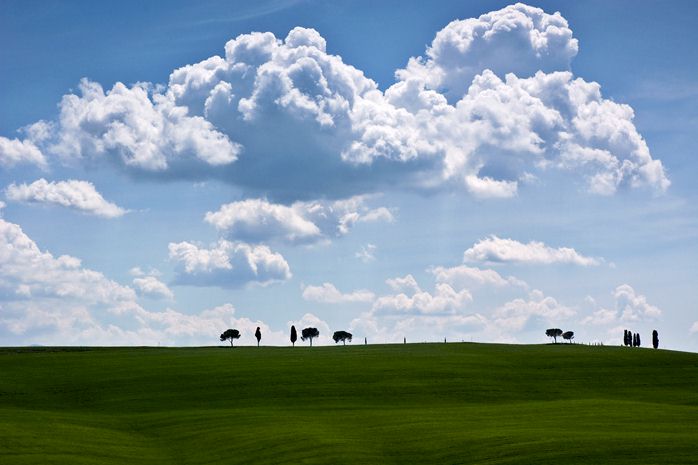|
The
Val d'Orcia
is one of several geomorphologically distinctive areas
in the large and diverse Region of Tuscany. Each of these areas has its
fervent proponents. Many strongly prefer the rounded hills, dense
vineyards, olive groves and woods characteristic of the Chianti
area, between Florence and Sienna. The Maremma,
both the Alta Maremma and the Bassa Maremma, once far off the beaten track
and remote from the principal art cities, now draw
visitors to their hill towns, thermal springs, Etruscan remains and
nature reserves. Visitors enthusiastic for mountain vistas favour the Garfagnano,
while the Mugello,
home territory of the Medici, is a surprisingly wild area of castles and
forests full of interest and within easy reach of Florence. The valleys of the Upper Arno - the
Casentino
with the
Castello di Poppi
- and
the
Upper
Tiber Valley (Valtiberina), where Tuscany merges with Umbria, the towns such as
Anghiari
and
Sansepolcro are characterised by their
broad river flood plains and precipitous mountainsides. Of all of these, the Val d'Orcia
is unique among the areas of Tuscany in having been accorded
UNESCO World Heritage Site status and its advocates are perhaps the most fervent of all.
The Val d'Orcia or Valdorcia refers, strictly speaking, to the valley of the
river Orcia but in general it refers to the area extending from the hills
south of Sienna as far as the Monte Amiata. Nothing
could differ more from Chianti, for example. The landscape in and around
the Val d'Orcia is characterised by open vistas of ploughed and sown land that
stretch over low hills to the horizon, punctuated here and there by
clusters or rows of cypresses and umbrella pines, and isolated farmhouses.
The
crete senesi
are areas of badlands that generations of farmers have
brought into cultivation. Nothing has been easy here. The volcanic cone of
Monte Amiata dominates the southern panorama. An area so attractive to
tourists is well-provided with vacation accommodation to match all tastes.
|


